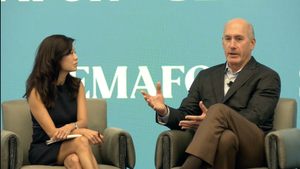AT&T Internet Air unboxing, including fixed wireless access point.
Fixed Wireless Access (FWA)
AT&T doubles 'Internet Air' subscriber tally in Q1AT&T doubles 'Internet Air' subscriber tally in Q1
AT&T tacked on 110,000 'Internet Air' subs in Q1 2024, extending its total to 200,000. After an initial focus on the consumer segment, AT&T recently expanded the fixed wireless access product to small and midsized businesses.
Subscribe and receive the latest news from the industry.
Join 62,000+ members. Yes it's completely free.




.jpg?width=700&auto=webp&quality=80&disable=upscale)





































